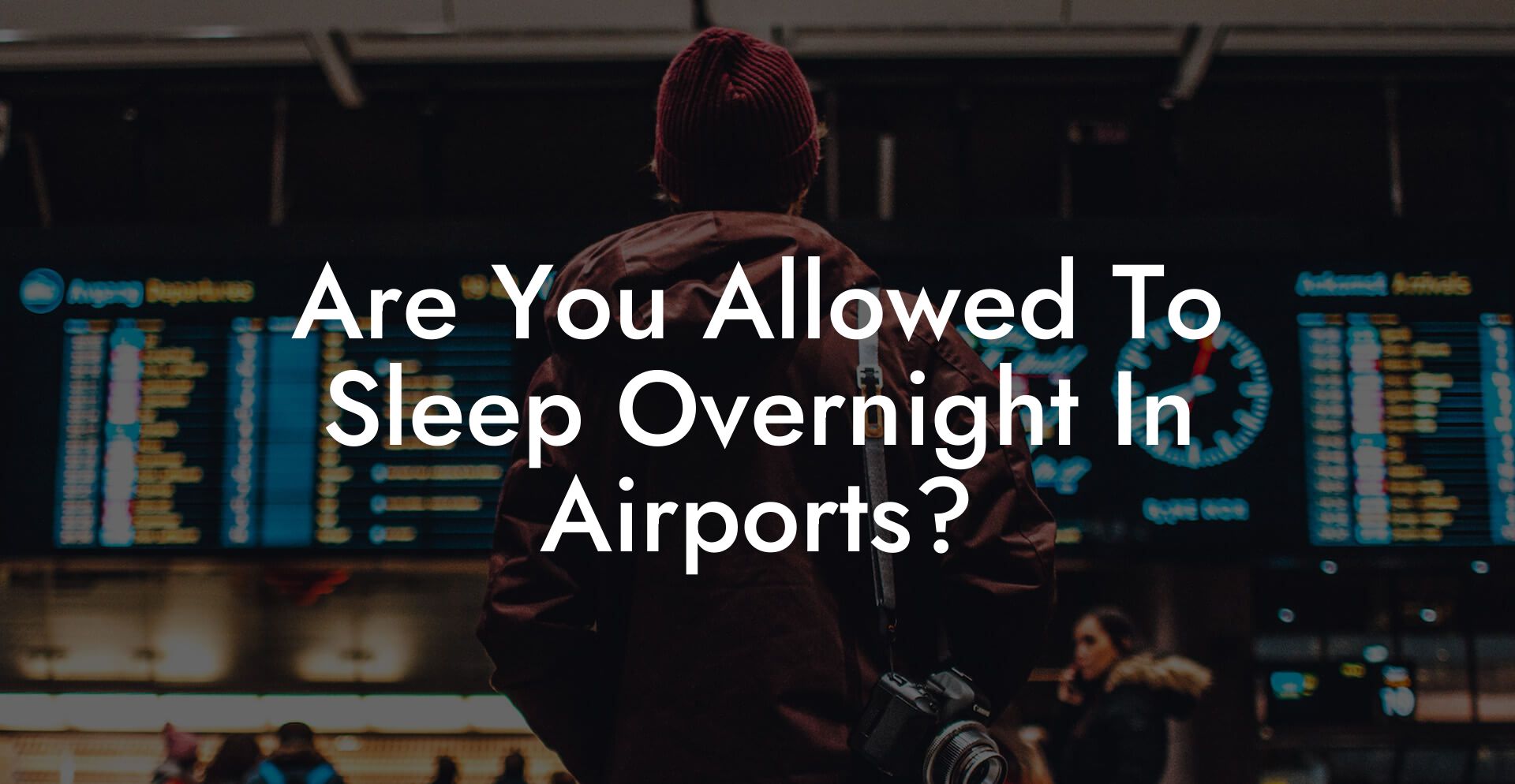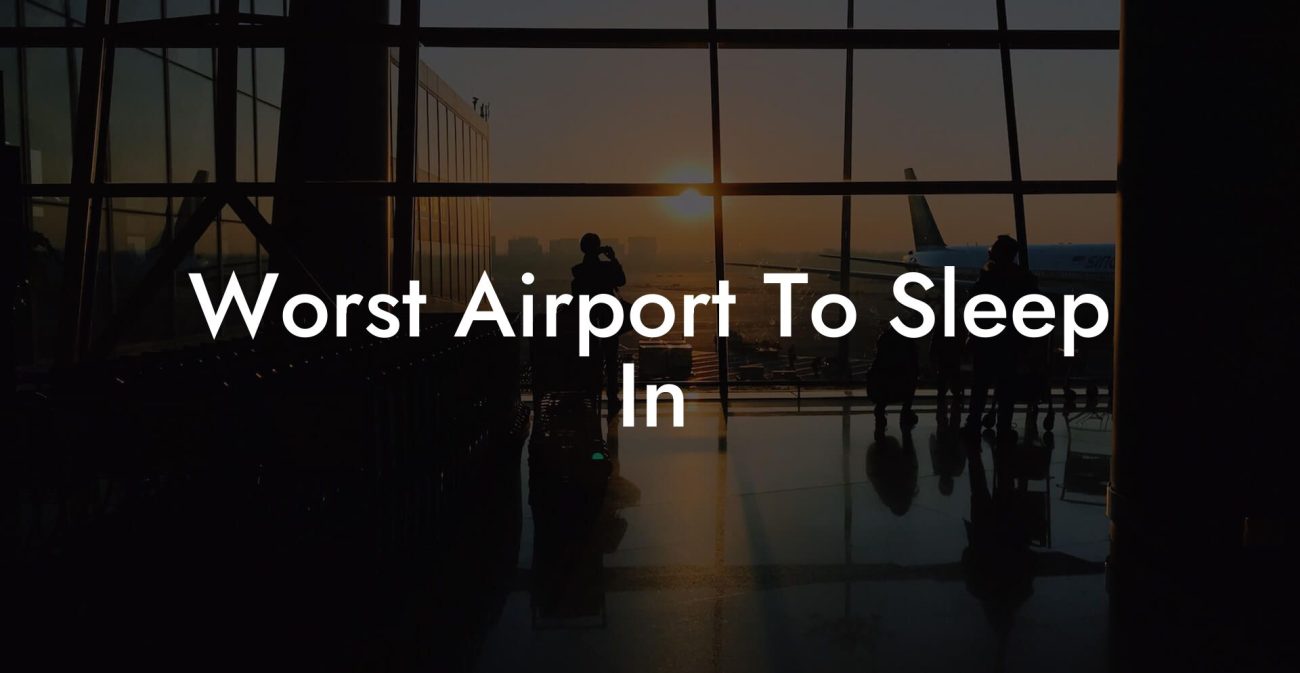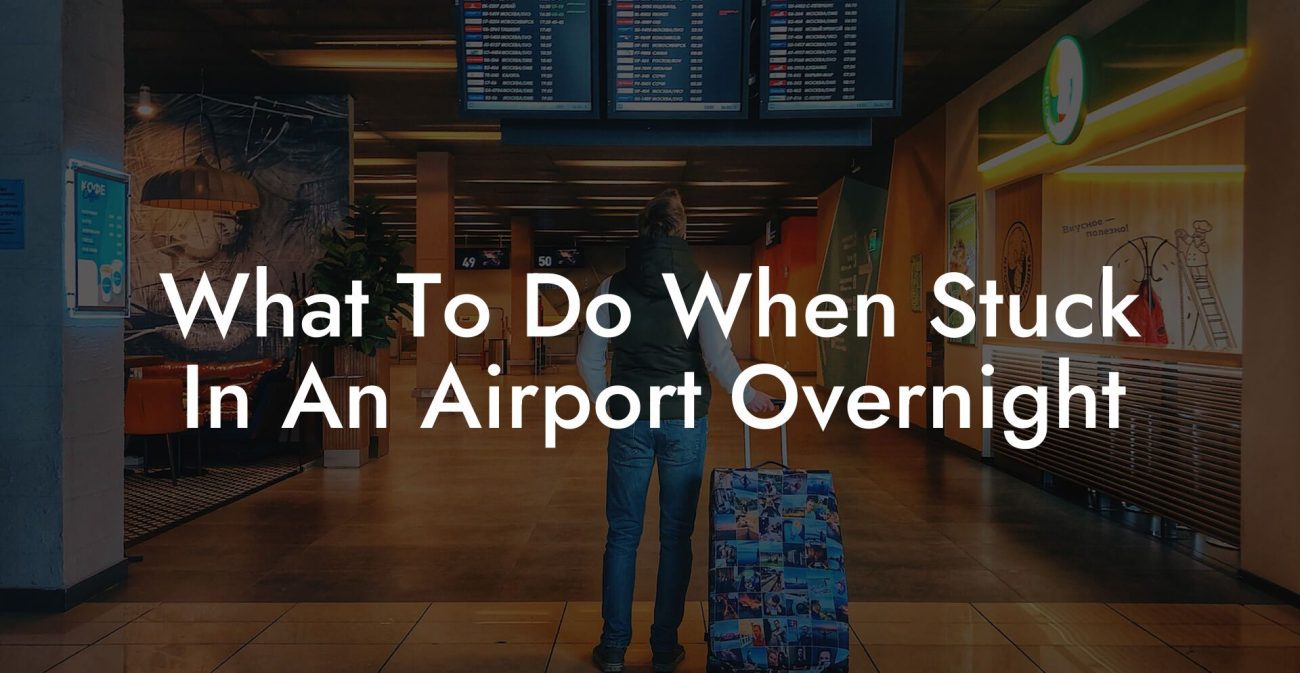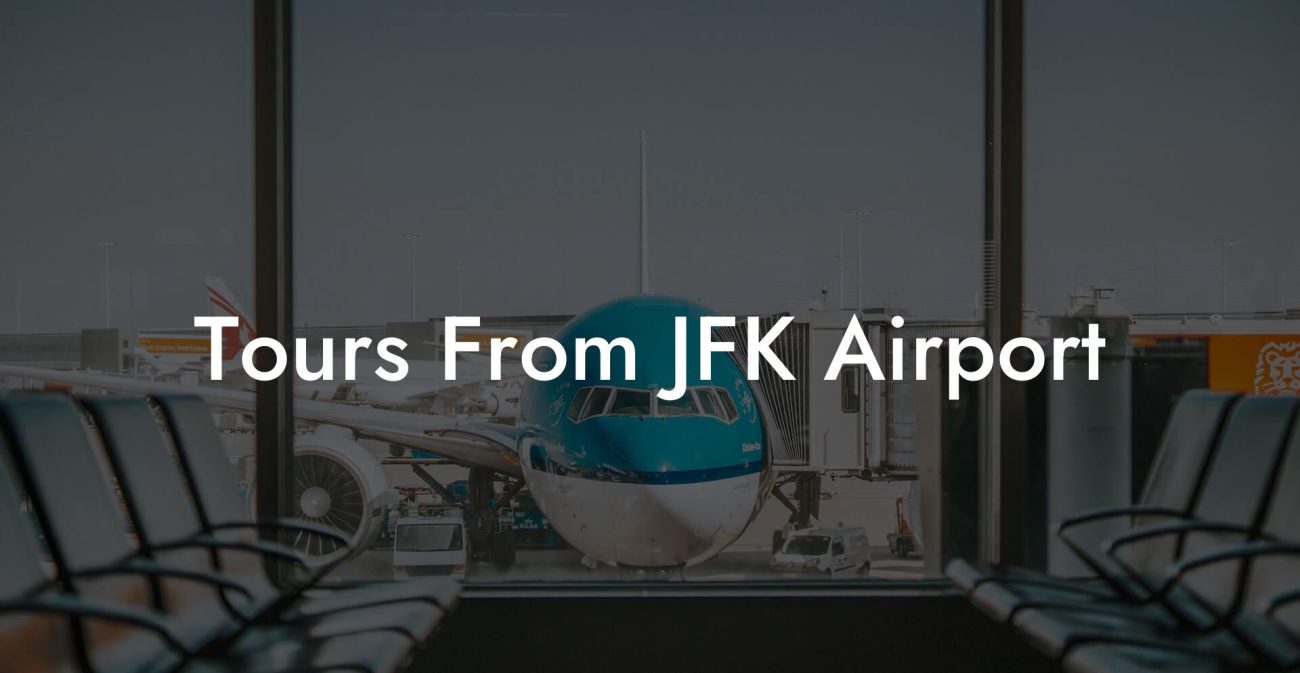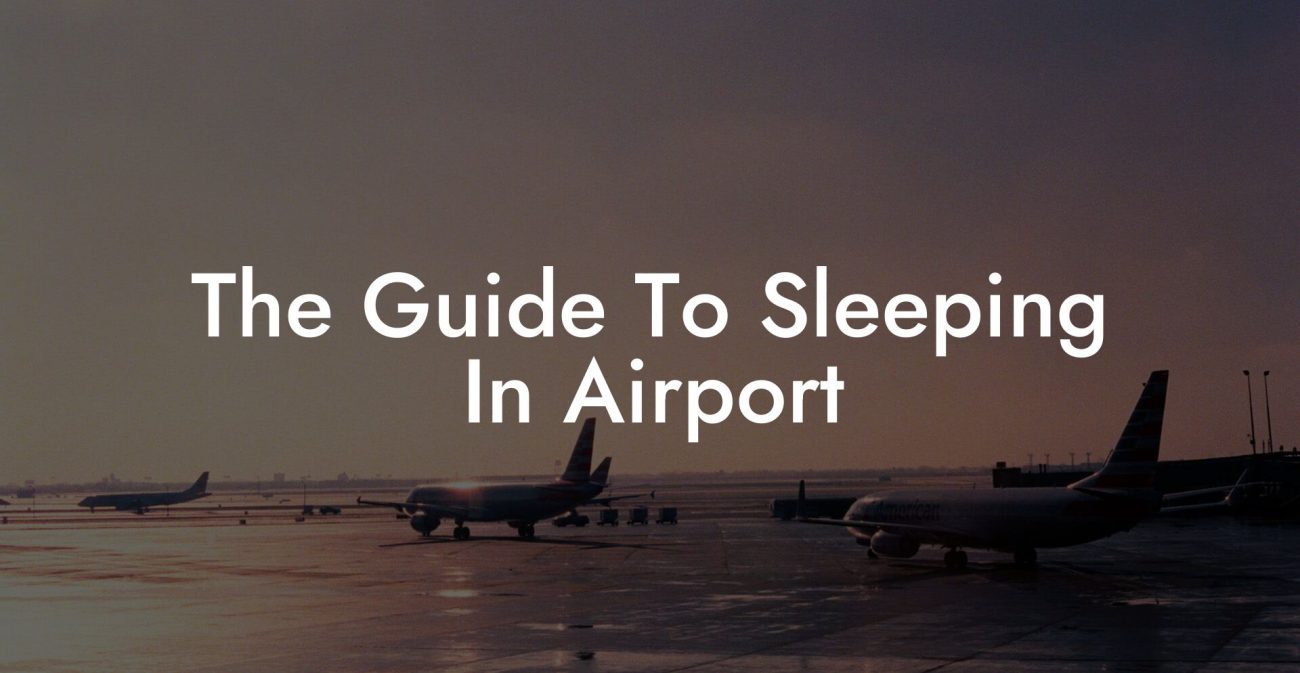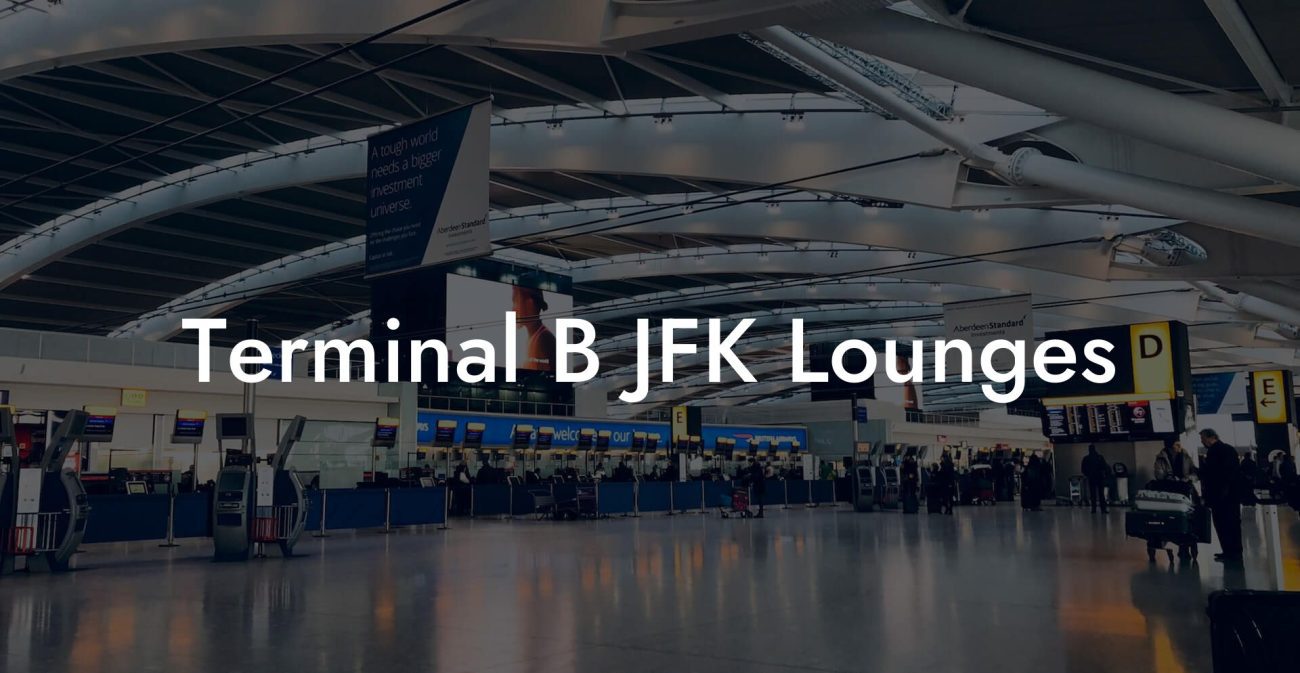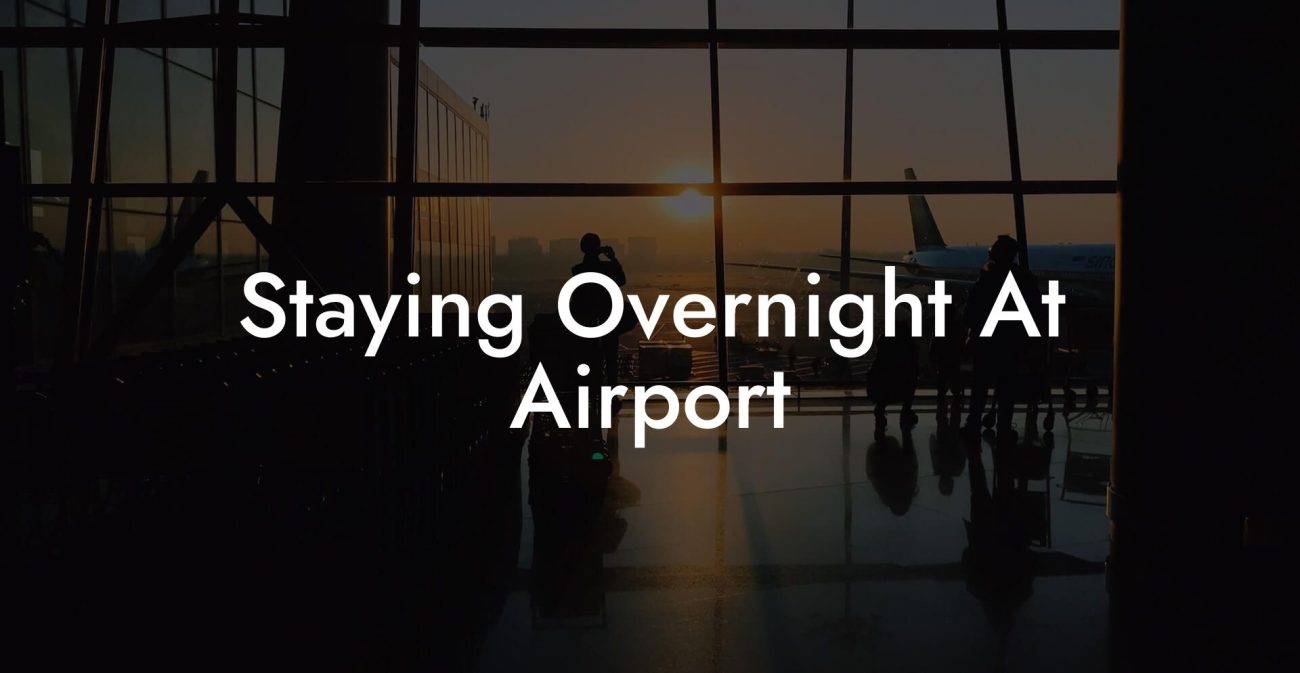Ever found yourself wondering if you can just crash at the airport without booking a pricey hotel room? Picture this: your flight’s delayed, your budget’s tight, and suddenly, that seemingly endless terminal becomes your impromptu sleepover destination. Whether you’re a savvy Gen-Z globetrotter or a millennial on a budget, the question “Are You Allowed To sleep Overnight In Airports?” has probably crossed your mind more times than you can count. Buckle up as we dive into the ultimate guide about airport sleeping, including the ins and outs of airport policies, hacks for comfort, and insider tips on finding those coveted sleeping pods!
Quick Links to Useful Sections
- Understanding Airport Overnight Sleeping Policies
- The Pros and Cons of sleeping in airports
- Perks of a Terminal Nap
- Drawbacks to Consider
- How to Prepare for an Airport Sleepover Like a Pro
- 1. Pack Smart
- 2. Scout the Best Sleeping Spots
- 3. Plan for Security Checks
- 4. Consider the Alternatives: Sleeping Pods and Lounges
- airport sleeping pods and Lounges: The New Age of Travel Comfort
- What Are Sleeping Pods?
- Airport Lounges: Beyond Just a Place to Wait
- Navigating the Late-Night Airport Atmosphere
- Tech and Travel: Essential Apps and Gadgets for the Airport Snoozer
- Travel Apps You Need
- Gadgets That Make a Difference
- Real Stories from the Tarmac: Traveler Experiences
- The Accidental Sleepover
- From Layover to Luxury: Discovering Sleeping Pods
- The Night Owl’s Guide
- Staying Safe and Secure During Your Airport Sleep
- Your Ultimate Resource Hub: Communities and Next Steps for Airport Sleep Seekers
- Airport Sleeping FAQs: Your Top Questions Answered
- Embracing the Journey: Redefining Airport Sleep
Understanding Airport Overnight Sleeping Policies
First things first: can you really sleep overnight in an airport? The short answer is—sometimes, yes! But before you start dragging your pillow and snacks to Terminal B, it’s vital to understand that airport policies can vary widely depending on the location, airline, and even the time of day.
Most major international airports have designated areas or “quiet zones” where travelers can rest. However, some airports may have strict no-sleep policies, especially if there’s a history of troublemakers or safety concerns. Generally, security personnel are more lenient with genuine travelers trying to catch some z’s, but if you’re spotted camping out with a full-blown tent, you might be politely escorted out.
Factors that influence these policies include:
- Local Laws and Regulations: Different countries have different rules regarding overnight stays in public spaces. Some places strictly prohibit it, while others take a “look the other way” approach if you’re discreet.
- Airport Size and Layout: Major hubs with multiple terminals often have more space and designated rest zones compared to smaller regional airports.
- Security and Safety Concerns: Airports must balance traveler comfort with security measures, especially during heightened security alerts or staffing shortages.
Before you decide to snooze at the airport, it’s a smart move to check the airport’s official website and review their policies. Social media groups, travel forums, and review sites like Reddit and TripAdvisor are also treasure troves of up-to-date traveler experiences.
The Pros and Cons of sleeping in airports
If you’re considering an airport sleepover, it pays to weigh the pros and cons first. After all, what seems like the perfect budget hack might come with a few unexpected quirks.
Perks of a Terminal Nap
Cost-Effective: Let’s be real—airport lounges and sleeping pods can be pricey. Sleeping in the terminal for free is the ultimate budget-friendly hack, especially for that last-minute layover.
Convenience: If you have an early morning flight or just can’t find an open hotel room in the middle of the night, staying where you are means no additional transit hassles.
Unique Experience: There’s something undeniably cool about experiencing the inner workings of an airport after hours. From the hum of security cameras to the midnight janitor doing their rounds, it’s an adventure waiting to be had.
Drawbacks to Consider
Lack of Comfort: Not all airport chairs are created equal. Hard benches, cramped seating areas, and noisy surroundings may make for a less-than-ideal sleeping spot.
Security Checks: While most guards are friendly, there is a risk of being questioned or asked to move, especially if you’re seen in a restricted area.
Hygiene Concerns: Let’s face it—airports are public spaces. You might have to deal with less-than-fresh restroom facilities or a lingering scent of fast food.
Weighing these pros and cons against your personal comfort level can help you decide if crashing in an airport is the best option for you.
How to Prepare for an Airport Sleepover Like a Pro
Preparation is key when it comes to transforming a cold, hard bench into your temporary slumber solution. Whether you’re a seasoned airport sleeper or contemplating your very first terminal nap, here are some essential tips:
1. Pack Smart
A Travel Pillow and Blanket: It might seem basic, but a comfortable neck pillow and a cozy blanket can make all the difference between a restless nap and actual sleep.
Noisy? Bring Earplugs and an Eye Mask: Airports are bustling hubs even at night—earplugs and an eye mask are your best friends when it comes to blocking out sound and light.
Extra Layers: Temperatures in airports can fluctuate wildly. Pack a small jacket or scarf to keep warm during those chilly hours.
2. Scout the Best Sleeping Spots
Not all corners of the terminal are created equal. Look for spots that are:
- Well-lit but not overly bright: A balance that discourages unwanted attention yet allows you to see your surroundings.
- Near essential amenities: Being close to restrooms, charging outlets, and food vendors can be a lifesaver when you’re half-awake.
- Less trafficked: Try to avoid the main concourses during peak hours. Look for secluded corners or specially designated rest zones.
3. Plan for Security Checks
While most security personnel understand the need for a good rest, always be prepared to show your boarding pass if you’re questioned. Keep your identification easily accessible and avoid setting up elaborate camps that might raise alarms.
4. Consider the Alternatives: Sleeping Pods and Lounges
For those who crave a little extra comfort without breaking the bank, many airports now offer paid options like sleeping pods, day rooms, or lounges. These secure spaces, often equipped with comfortable beds, showers, and even complimentary snacks, provide a more restful alternative to terminal benches.
If you value privacy and a guaranteed spot to crash, research which airports in your travel itinerary offer these facilities. Some airlines also include lounge access in their premium packages, so check with your carrier before settling in for a sleep.
airport sleeping pods and Lounges: The New Age of Travel Comfort
Enter the era of airport sleeping pods and lounges—your ticket to a more luxurious overnight experience without leaving the terminal. Designed with modern travelers in mind, these high-tech havens combine privacy, security, and comfort, making them an increasingly popular choice.
What Are Sleeping Pods?
Sleeping pods are compact, private spaces that can be rented on an hourly basis for travelers seeking a quick nap or a full night’s rest. They come equipped with:
- Comfortable bedding: A soft mattress, pillows, and blankets to help you drift off.
- Privacy features: Lockable doors or curtains that create a personal sanctuary away from the busy terminal.
- Charging ports and Wi-Fi: Stay connected and powered up while you sleep.
These pods offer the ideal blend of affordability and comfort, perfect for long layovers or unexpected flight delays.
Airport Lounges: Beyond Just a Place to Wait
Airport lounges aren’t just for business travelers anymore. With amenities ranging from gourmet food and soft seating areas to showers and nap zones, many lounges cater specifically to the sleep-deprived traveler. Tips to maximize your lounge experience:
- Membership Programs: Joining a lounge membership program can provide access across multiple airports, giving you a consistent level of comfort no matter where you land.
- Day Passes: Not flying premium? Many lounges offer day passes that give you a taste of the luxury without a full membership commitment.
- Apps and Websites: Use travel apps and websites to compare lounges across various airports, check reviews, and book in advance.
Whether it’s a trendy startup lounge with social spaces and artisanal coffee or a more classic, quiet atmosphere perfect for rest, exploring these alternatives can take your airport sleep game to the next level.
Navigating the Late-Night Airport Atmosphere
There’s something uniquely surreal about an airport at night. The usually bustling corridors become quiet stretches of solitude, with minimal lighting and fewer people roaming around. But with that calm comes the challenge of staying safe and comfortable.
Here are some insider tips for navigating the late-night airport vibe:
- Stay Alert: Even if you plan on taking a nap, keep one eye open (metaphorically!). Familiarize yourself with emergency exits and nearby security posts.
- Stick to Well-Populated Areas: Even during the dead of night, some terminals have maintenance staff or security personnel on duty. Opt for spots near these areas for an added layer of security.
- Blend In: Act like you belong. Avoid drawing attention to yourself by setting up an elaborate campsite. Use a backpack as your pillow and avoid flashing expensive gadgets around.
- Stay Connected: Keep your phone charged and have emergency contacts saved. A quick check-in with a friend can also ease any anxiety about your surroundings.
- Plan Meals and Hydration: Food courts and vending machines might have limited options at night. Pack some snacks and a refillable water bottle to keep hunger and dehydration at bay.
Embracing the quiet mystique of a nocturnal airport can be an adventure in itself. With the right mindset and preparation, you can transform the night into a surprisingly serene and restorative experience.
Tech and Travel: Essential Apps and Gadgets for the Airport Snoozer
In today’s digital age, your smartphone isn’t just a means of communication—it’s your ultimate travel companion. Several apps and gadgets can make airport overnight stays more comfortable and less stressful.
Travel Apps You Need
- Airport Sleep Finder: This handy app helps you locate designated sleep zones, lounges, and sleeping pods within major airports.
- Flight Tracker: Apps like FlightAware keep you updated on delays and gate changes, reducing the stress of long layovers.
- Currency Converters and Local Guides: Knowing your local currency and having insider tips on nearby dining options can ease your transition from airport to adventure.
Gadgets That Make a Difference
Portable Battery Packs: A fully charged phone is crucial for navigating through an airport at odd hours, especially when emergency notifications or travel updates roll in.
Noise-Cancelling Headphones: Block out ambient noise and create your personal soundscape. Whether it’s the soothing playlist of lo-fi beats or simply the peaceful hum of white noise, these headphones are a game changer.
Travel-Friendly Backrest: There are inflatable or foldable backrests designed to add a touch of comfort to hard seating. Compact and portable, they can transform a cold bench into an almost cozy nook.
With technology and the right gear in hand, your airport sleep experience goes from “barely bearable” to “actually enjoyable.”
Real Stories from the Tarmac: Traveler Experiences
Sometimes, the best advice comes from those who’ve been there, done that, and lived to tell the tale. Here are some real-life accounts from travelers who embraced the challenge of sleeping overnight in airports:
The Accidental Sleepover
Jenna, a solo traveler with a penchant for adventure, found herself stranded at a major European hub after a sudden cancellation. With little choice but to sleep in the terminal, she discovered a tucked-away “quiet zone” complete with reclining chairs and gentle ambient music. Despite the initial nervousness, Jenna ended up catching up on some much-needed sleep, later sharing her experience on social media with a quirky #TerminalTales hashtag.
From Layover to Luxury: Discovering Sleeping Pods
Mark, a self-proclaimed frugal foodie, once opted out of a cramped airport bench in favor of a sleek sleeping pod. His initial skepticism turned to delight as he realized the pod offered a private oasis complete with charging ports, a comfortable bed, and even a mini-fridge stocked with complimentary water. Mark’s experience is a testament to how a small investment can transform a long layover into a rejuvenating mini-retreat.
The Night Owl’s Guide
Then there’s Lisa—a self-described night owl—who’s perfected the art of the airport sleepover. From scouting the nearest charging outlets to setting up a portable alarm clock on her phone, Lisa’s detailed tips have helped countless fellow travelers navigate the midnight maze of airport life with humor and grace.
These stories show that while sleeping in airports isn’t always your first choice, with a bit of planning and the right mindset, it can turn into an unexpectedly memorable part of your journey.
Staying Safe and Secure During Your Airport Sleep
Safety is paramount, especially when you’re in an unfamiliar environment. Here are some essential safety tips to ensure your airport sleep remains worry-free:
- Keep Your Essentials Close: Your passport, wallet, phone, and boarding pass should be within arm’s reach. Consider using an anti-theft travel pouch if you’re prone to misplacing things.
- Stay Visible but Not Vulnerable: Position yourself near security exits or areas that are moderately staffed. Avoid secluded corners that might attract unwanted attention.
- Buddy Up Virtually: Check in with a friend or family member via text or social media to let them know where you are. Sharing your location can add an extra layer of security.
- Avoid Oversharing Your Location: While it’s great to connect with loved ones, be cautious about posting your exact location publicly on social media while you’re sleeping in an open area.
- Trust Your Instincts: If something feels off, it probably is. Don’t hesitate to move to another area or alert airport staff if necessary.
A combination of practical measures, digital preparedness, and a dash of common sense will go a long way in ensuring that your airport sleep remains as safe as it is convenient.
Your Ultimate Resource Hub: Communities and Next Steps for Airport Sleep Seekers
It’s not just about surviving a long layover—it’s about thriving (and maybe even enjoying) the experience. Whether you’re a seasoned airport sleeper or embarking on your first terminal naptime, there are an abundance of resources waiting to help you take your travel experience to the next level.
Online Communities: Join forums, social media groups, and travel blogs where fellow travelers swap tips, post reviews, and share real-time updates about the best sleeping spots in various airports. From Reddit threads dedicated to travel hacks to Instagram pages showcasing the coolest terminal nooks, you’re never alone in your quest for comfort.
Travel Apps and Guides: As mentioned earlier, apps like Airport Sleep Finder, LoungeBuddy, and various airline-specific apps are invaluable for planning your next sleep-centric layover. Along with detailed airport maps and user reviews, these apps can point you directly to hidden gems in even the busiest hubs.
Local Tourism Boards: Some cities and their airports have embraced the traveler’s need for rest by investing in comfortable seating, quiet zones, and even sleep pods. Check the local tourism or airport website for the latest updates on available facilities.
Budget Travel Blogs and Podcasts: Engage with content creators who share real-life experiences and innovative hacks for making the most of your time on layovers. Their firsthand accounts can provide actionable tips and plenty of laughs along the way.
Finally, always be on the lookout for new services and special deals—airports are continually evolving to meet the needs of the modern traveler. Your journey towards more comfortable, secure, and even downright enjoyable overnight airport stays is just beginning!
Airport Sleeping FAQs: Your Top Questions Answered
To wrap up this definitive guide and to help ease any lingering doubts about crashing at the airport, here are some frequently asked questions from fellow travelers:
1. Is it legal to sleep overnight in an airport?
While most airports do not have specific laws prohibiting overnight stays by travelers, policies vary by airport and country. It’s always best to check the local rules and the airport’s official guidelines.
2. Can airport security ask me to leave if I’m sleeping in the terminal?
Yes, if airport staff deem your setup as a safety or security risk, they may ask you to relocate. Staying in designated areas and being discreet can help avoid unwanted attention.
3. What are the best airports for sleeping overnight?
Some well-known international hubs have dedicated rest zones, sleeping pods, or comfortable lounges. Research online reviews and travel forums to find recommendations based on your route.
4. Are sleeping pods worth the extra cost?
If comfort and privacy are a priority, sleeping pods can be a game changer. They offer a neat solution for catching up on valuable shuteye without sacrificing security or convenience.
5. How do I avoid theft or losing my belongings overnight?
Keep your essentials—like your passport, phone, and wallet—with you at all times. Consider using a travel pouch or locking bag, and if possible, sleep in areas under light supervision.
6. What should I bring for an overnight airport stay?
Essentials include a travel pillow, blanket, earplugs, an eye mask, snacks, a water bottle, and a portable charger. Dressing in layers is also important given the fluctuating temperatures.
7. Are airport lounges available for non-premium travelers?
Absolutely. Many lounges now offer day passes or allow entry for a fee, even if you don’t fly first-class. Check with your specific airport or airline for available options.
8. How do I find the designated sleep zones at an airport?
Research ahead of time using the airport’s website or dedicated travel apps like Airport Sleep Finder. Local reviews on forums such as Reddit can also provide real-time insights.
Embracing the Journey: Redefining Airport Sleep
In a world where travel plans can be as unpredictable as a flight delay, learning to adapt and thrive is a critical skill. Overnight sleeping in airports, whether on a hard chair or inside a high-tech sleeping pod, is part of the modern nomadic lifestyle. For many, it’s not merely a necessity under turbulent circumstances—it’s become a badge of honor among budget travelers and flight enthusiasts alike.
Every terminal, gate, and lounge has its own personality—a blend of transient stories, hurried goodbyes, and the quiet promise of adventures to come. Embracing airport sleep isn’t just about catching some Z’s; it’s about reimagining downtime as a valuable opportunity to recharge, plan your next move, or even dive into a good book. With every nap, you’re not just waiting out a delay, you’re part of a dynamic, pulsating community that understands the beauty of spontaneity.
Even if your layover is short or your terminal seems less than ideal, remember that every journey has its bumps and its moments of unexpected joy. Your resilience, adaptability, and sense of humor are the ultimate travel companions.
So the next time you find yourself wondering, “Are You Allowed To Sleep Overnight In Airports?” step forward with confidence, armed with the best travel hacks, the latest tech tools, and an adventurous spirit. Your terminal sleepover could be one of the most memorable parts of your trip.
After all, travel is not just about the destination—it’s about the journey, every unconventional rest stop, and every story waiting to be told, even if it starts on a cold airport bench.
Useful Interruption: Dive deeper into the world of airport sleeping guides with our most popular sections. If there is anything you think is missing or anything you would love for us to write about, just give us a shout.
- General Airport Sleeping Guides
- Travel Gear & Equipment Recommendations
- Regional and Airport-Specific Guides
- Airport Sleeping Pods & Reviews
- Health, Safety, and Comfort Tips for Airport Sleepers
Last week, I decided to try the world-famous "airport sleepover" experience. Imagine this: I'm lying on a bench in Terminal C, surrounded by suitcases that have seen more of the world than I ever will, and a PA system that sounds like a karaoke machine on a sugar rush. I pull out my travel pillow—which, by the way, is more like a sad deflated balloon—and declare, "Tonight, I’m the king of this terminal!"
Soon enough, fellow travelers become my unexpected audience. One guy, fresh off a red-eye, whispers, "Hey, do you think if we sleep long enough, we can catch our flight in our dreams?" I reply, "Sure, and maybe I'll even get an upgrade to first-class in my nap!" The airport lights flicker like a disco ball, and every time someone announces a delayed departure, it’s like a punchline to our impromptu stand-up routine.
As I finally drift off, I dream of a world where boarding passes are like VIP tickets to the best sleepover party ever—a party where the only baggage is the laughter you carry with you. Waking up, I realize the airport is still the same, but I now hold the honorary title of "Terminal Comedian," a title I wear with as much pride as my permanently mismatched socks!

